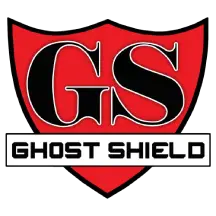U.S. light-vehicle sales slipped 0.5 percent in May, even with higher discounts and strong truck demand, as the auto industry prepared to limp from one key selling season to another.
The seasonally adjusted, annualized rate of sales fell to 16.7 million, down from 17.2 million in May 2016, on weaker fleet volume across the industry. A survey of 11 analysts by Bloomberg in late May put the average estimate for May’s SAAR at 16.8 million.
May marked the third straight month the SAAR has come in below 17 million after six months above that key threshold. Last year’s sales total of 17.54 million was a record.
The lack of consumer demand, notably for cars, even amid readily available financing, low gasoline prices and strong job growth belies underlying weakness within the market.
Ford, Nissan and Honda posted U.S. sales increases in May while General Motors, Toyota, FCA and Hyundai-Kia fell as the industry fell just short of capturing its first monthly sales gain of the year.
Ford Motor Co.’s 2.3 percent advance, aided by fleets, marked its first increase since December. Nissan North America benefited from a spike in discounts in recording a 3 percent jump. GM dropped 1.3 percent as the company continued to dial back on shipments to daily rental agencies. After five months, Toyota Motor Corp., Fiat Chrysler and Hyundai-Kia are still looking for their first advance of 2017.
Truck sales remained strong, rising 6.2 percent in May, even after they dipped in April, while weak car demand persisted in May, with volume off 10 percent. Among key car segments, subcompact demand skidded 19 percent and midsize car deliveries dropped 12 percent.
Light-vehicle sales across the industry had been forecast by analysts to rise slightly last month, helped in part by one extra selling day.
Edmunds’ Caldwell said finance incentives rose 33 percent year over year in May, compared with a 28 percent jump in lease incentives and an 18 percent increase in cash incentives.
Nissan’s advance was led by Infiniti, up 16 percent, while volume rose 1.9 percent at its namesake brand. The May results follow a 1.5 percent decline in Nissan’s April volume, its only decline this year.
Nissan’s average incentive on a new light vehicle rose 19 percent last month to $3,867 from May 2016 levels, ALG estimates.
At Ford, deliveries rose 2.3 percent, with volume up 2.2 percent at the Ford division and 4.9 percent at Lincoln. Ford’s retail sales slipped 0.8 percent while fleet shipments jumped 8.4 percent, with daily rental deliveries surging 24 percent. Ford also outsold rival GM, by nearly 2,900 cars and light trucks, for the first time since March 2016.
GM said May sales dropped 1.3 percent behind a decline of 3.8 percent at Chevrolet and 5.2 percent at GMC. Volume rose 29 percent at Buick and 9.2 percent at Cadillac. GM’s retail sales rose slightly to 191,388 vehicles last month while fleet volume dropped 36 percent.
Toyota sales fell 0.5 percent to 218,248 , with the Toyota division eking out a 0.1 percent gain while Lexus suffered a 4.8 percent drop.
FCA deliveries notched down 0.9 percent. Jeep fell 15 percent while Fiat took a 16 percent hit and the Chrysler brand was off 1.8 percent. Ram led FCA with an 18 percent improvement while Dodge rose 8.4 percent. Alfa Romeo sold 919 vehicles during the month compared with 44 a year ago.
The VW brand stretched its winning streak to seven months with a 4.3 percent gain in May.
At Subaru, May volume rose 12 percent as the automaker continues to roll toward another annual U.S. sales record. Mazda said deliveries slipped 7.9 percent while sales edged up 4.5 percent at Mitsubishi.
Among other luxury brands, volume rose 2.5 percent at Audi, 5 percent at Porsche, 44 percent at Jaguar, 0.9 percent at Land Rover and 12 percent at Volvo.
While the economy and employment continue to grow, and U.S. equity markets reach new highs, U.S. sales — now down 2 percent for the year — are on track to fall in 2017 for the first time since 2009. That would end a string of seven annual gains for the industry, the longest such run in a century.
Incentive spending continues to rise, averaging $3,583 per vehicle in early May, an increase of $241 from May 2016 and a record for the month, J.D. Power and Associates says. Average light-truck spiffs rose $187 to $3,358 and car incentives increased $344 to $3,942.
And in a sign that inventories continue to climb, J.D. Power says the industry’s average rose above 70 days in May for the first time since 2009. And more than 27 percent of new vehicles sold in early May sat on dealer lots for more than 90 days, up from 25 percent in May 2016.
ALG estimates that incentive spending averaged $3,435 last month, an increase of 9.5 percent over May 2016, with GM, Ford, FCA and Volkswagen Group the biggest spenders among broad-line automakers.
ALG has reduced its outlook for U.S. light-vehicle sales this year to 17.2 million from 17.4 million.
Analysts say deals are getting more generous on remaining 2016 cars and light trucks as well as some 2017 models.
